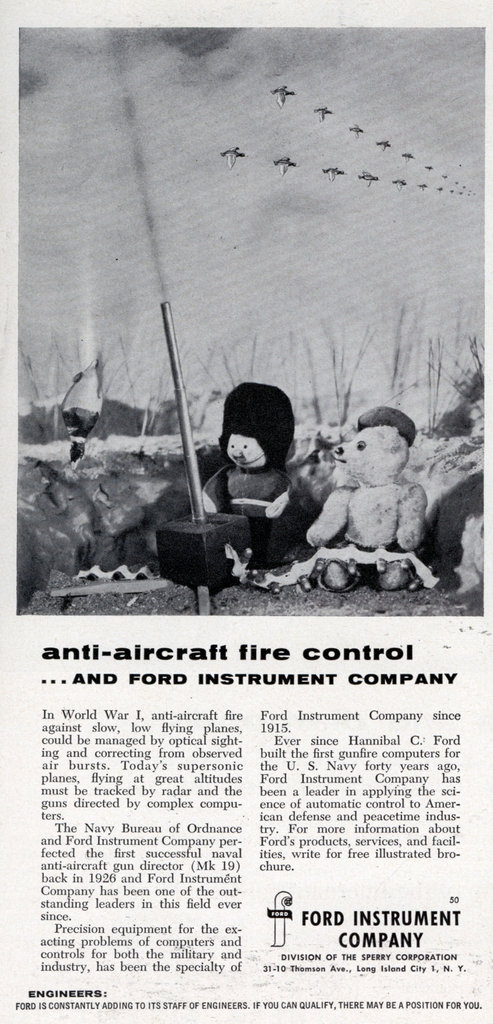« Back to Blog
Antiaircraft Gunfire Director – The Mark 19
Waring Hills Nov 19, 2010
USS Maryland BB-46 at the New York Naval Shipyard in the 1920's. See Brooklyn bridge in background.
With the advent of high-flying and high-speed aircraft, the United States Navy was faced with a new problem, which was ignored until Billy Mitchell’s demonstration of air power in the sinking of the German battleship Ostfriesland in 1921.
In 1925 Ford Instrument built an antiaircraft gun director in response to a navy request and delivered it to the navy the following year as the Mark 19, for the USS Maryland. This device had 55,000 moving parts. It integrated an entire control system into a single unit that sat on the deck, including range-keeper, a stable element, and tracking telescopes. It used the same calculations as the range-keepers did for surface fire control, but added an altitude variable for the target. While it was an impressive solution to a difficult problem…it could neither track a high-speed aircraft or dive bombers and seems to have been intended to guide a barrage of fire to the general area of a target. Forty two Mark 19 gun directors would be installed in the fleet by 07 December 1941, and they served at Midway, Coral Sea and Guadalcanal.
The Mark 19 was used with the 5 inch guns on battleships and cruisers. The initial figures for target speed and altitude, taken from the rangefinder (RF) were fed into the mechanical computer (range-keeper) which predicted the future target position. One set of predictions enabled the pointer and trainer to check the range-keeper output and in effect spot, while a later prediction was used to aim the guns so that they led the target correctly, and there was a later prediction for fuze settings. Gyro and optical stabilization were included (rolling seas).
There would be marked improvement in the years to come and the introduction of the proximity fuse in World War II would aid greatly in the defense of slow-moving ships against high-speed aircraft.


I served as a gunnery officer in the mid 1960s on a DD that still had the Mk. 37 system from WWII that had been developed in the mid-1930s. By the late 1930s US and British fire control for AA fire was far ahead of other navies, so much so that in 1939 the Soviets were negotiating to have a battleship designed and built in the US and delivered to them in operational condition just so that they could get ahold of our AA fire control systems. However, as one historian pointed out, ‘what was state of the art in 1939 was obsolete by 1941’ pointing out how fast things developed in this area once the war started.
PCC
Thanks PC, interesting about the Soviet battleship, but they did it so well in many other areas by reverse engineering!
Does anyone knows who owns the Ford Instrument Company brand nowadays?